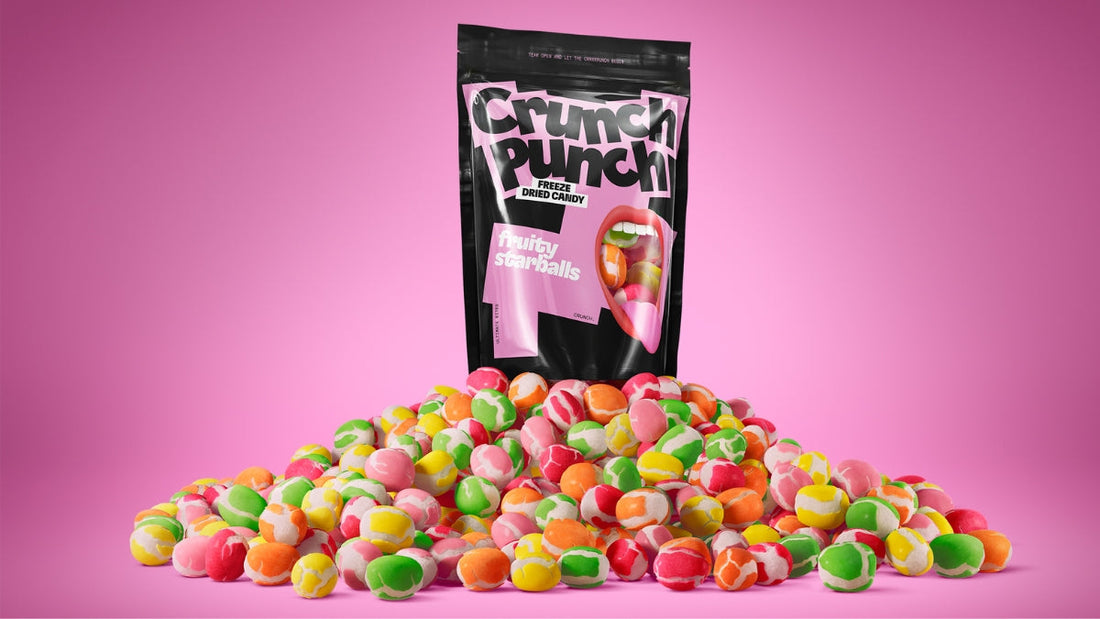How to Make Freeze-Dried Candy: A Simple Guide for Sweet Treat Lovers
Introduction
Freeze-drying candy at home is a fun and innovative way to enjoy sweets with an extended shelf life and a novel texture. This preservation method removes moisture from candy by freezing it and then reducing the surrounding pressure to allow the frozen water in the candy to sublimate directly from ice to vapor. Home enthusiasts can experiment with different types of sweets, discovering which candies best retain their flavor and color after the freeze-drying process.
Getting Started
Before embarking on the adventure of making freeze-dried candy, it is important to choose the right type of candy and acquire the necessary equipment. Setting up a clean workspace is also crucial for an efficient freeze-drying process.
Choosing the Right Candy
Not all candies are suitable for freeze-drying. Skittles and Starburst Minis generally yield the best results. While gummy candies are easy to make, they do not taste as good as Skittles or Sour Skittles after the freeze-drying process. Avoid candies that are high in fat, as these do not freeze-dry well. Skittles and Starburst Minis, on the other hand, retain their vibrant flavors and achieve a satisfying crunch that makes them perfect for freeze-drying.
Essential Equipment
To make freeze-dried candy at home, having the right equipment is crucial:
- Home Freeze Dryer: A must-have for achieving the required conditions for freeze-drying. Some popular models include:
- Harvest Right Freeze Dryers: Known for their reliability and efficiency.
- Labconco FreeZone Freeze Dryers: Ideal for both beginners and experienced users.
- Millrock Technology Freeze Dryers: Advanced features for professional results.
- Airtight Containers: To ensure extended shelf life after drying, use high-quality containers to protect the candy from moisture and humidity.
Prepare Your Workspace
Ensure the workspace is clean and organized before starting. Gather parchment paper, a baking sheet, and make space in the freezer if using a non-machine method. The parchment paper will prevent sticking, and the baking sheet should have enough room to space out the candy pieces.
The Freeze Drying Process
Freeze drying candy transforms it into a crunchy, indulgent treat through a process involving specific temperatures and pressure changes. This method ensures even freezing and water removal, which is essential for creating that distinct texture of freeze-dried candy.
Pre-treatment Procedures
If using candies like Nerds Rope, cut them into smaller pieces to ensure even drying. When freeze-drying Skittles, it's crucial to leave enough space between each candy. This spacing is essential for achieving the beautiful, freeze-dried round shape that Skittles are known for. Properly spaced candies allow for better airflow and more consistent freezing and drying results.
The Freezing Phase
The candy needs to be frozen solid, typically carried out in a deep freezer or with the aid of dry ice. Temperatures should reach between -30° and -50°F (-34° and -45°C) for optimal results. A regular freezer may suffice, but the process will be slower and potentially less consistent than using a specialized freeze dryer.
Final Drying and Sealing
Once frozen, the candy undergoes a vacuum process to remove all moisture, translating to that airy, crunchy texture. The freeze-drying process involves gradually warming the candy in a vacuum to sublimate ice directly into vapor. After drying, the candy is sealed in airtight containers to protect its texture and extend shelf life. Sealing immediately locks in the freshness and crispness of the candy, making it ready for storage or consumption.
Remember that each candy has its own specific temperature to make it the best and the most crunchy freeze-dried candy ever.
After Freeze Drying


After the candies have been freeze-dried, they must be stored properly to maintain their quality and extend their shelf life. The key is to keep them dry and airtight.
Post-Drying Storage
Once candies are freeze-dried, they should immediately be transferred to airtight containers to protect them from moisture and humidity. The storage options include:
- Sealed bags: Heavy-duty freezer bags with zip-top seals can effectively keep out air and humidity.
- Vacuum-sealed containers: These offer an extra level of protection, keeping the freeze-dried candies crisp and fresh.
It's important to label each container or bag with the date of freeze drying to help track shelf life and ensure candies are consumed when they are at their best quality.
Maintaining Quality
To maintain the best quality of freeze-dried candies:
- Avoid exposure to moisture: Ensure that the storage area is low in humidity to prevent the candy from reabsorbing water from the air.
- Limit temperature fluctuations: Stable temperatures help preserve the candy's texture and taste. Avoid storing them where temperatures change frequently.
- Use within the optimal period: While freeze-dried candies can last for years, they are usually best enjoyed within the first few months of drying to ensure the taste is at its peak.
Exploring Candy Varieties
Before diving into the freeze-drying process, it's important to understand that not all candies yield the same results. The selection of candy is crucial, as different types respond uniquely to the freeze-drying method.
Best Candies for Freeze Drying
- Skittles: Their hard shell and chewy center transform into a light, crunchy treat.
- Gummy Candies: Including gummy bears, gummy worms, and peach rings; they puff up and provide an airy texture.
- Starburst: They become more crumbly and intensely flavored once freeze-dried.
- Marshmallows: They're perfect for freeze drying, turning into a melt-in-your-mouth delicacy.
Certain candies like hard candies and milk duds may retain their initial hardness but often take on a more brittle texture. Candy corn, with its unique texture, freeze dries well and provides a novel eating experience. However, one should note that chocolate candies can be tricky, as their high-fat content might affect the end result, often causing them to become powdery.
Handling Different Textures
When freeze drying different types of candy, it's important to consider how their original textures will alter:
- Chewy Candies: Such as gummy candies, often expand and become crispy.
- Hard Candies: The process typically makes them more fragile, shattering easily into crunchy pieces.
Flavor and Texture Enhancement
In the process of freeze-drying candy, careful attention to detail can significantly enhance the flavor and texture, leading to a delightful and intensified eating experience.
Ensuring Intense Flavor Profiles
One can ensure the preservation of candy flavor and even enhance it during the freeze-drying process. The absence of moisture content concentrates the flavors, providing an intense flavor profile that is more pronounced than in its original state. It's critical to start with high-quality candies that are known for their rich flavors. Gummies, for instance, become remarkably flavorful when freeze-dried, offering a burst of taste with each bite.
Key Factors for Intense Flavors
- Initial Candy Quality: Choose candies with strong, distinct flavors.
- Moisture Removal: Thorough dehydration through freeze-drying amplifies the original flavors.
The Role of Texture in Freeze-Dried Candy
The texture is paramount in freeze-dried candy, transforming chewy or soft candies into a crispy texture that provides a satisfying crunch. This unique texture not only appeals to the senses but also enhances the overall experience of the candy by adding a new dimension to its consumption. The removal of moisture is key, creating a dry and brittle texture, which results in an unexpected and crunchy sensation.
Noteworthy Textural Changes
- Chewy to Crispy: Marshmallows and gummy candies transition from a soft chew to an airy crisp.
- Moist to Dry: Higher moisture candies, like fruits coated in chocolate, become delightfully brittle.
Are you interested in how to make freeze-dried candy at home without a professional machine?





